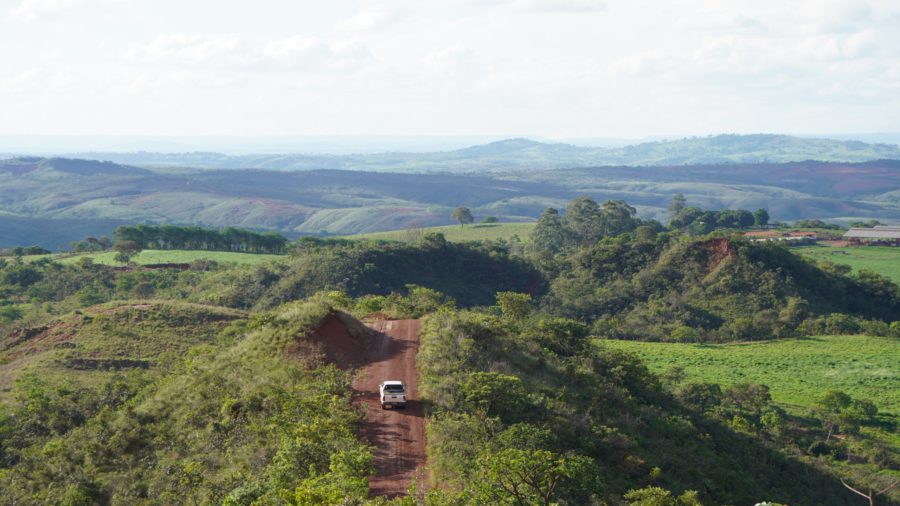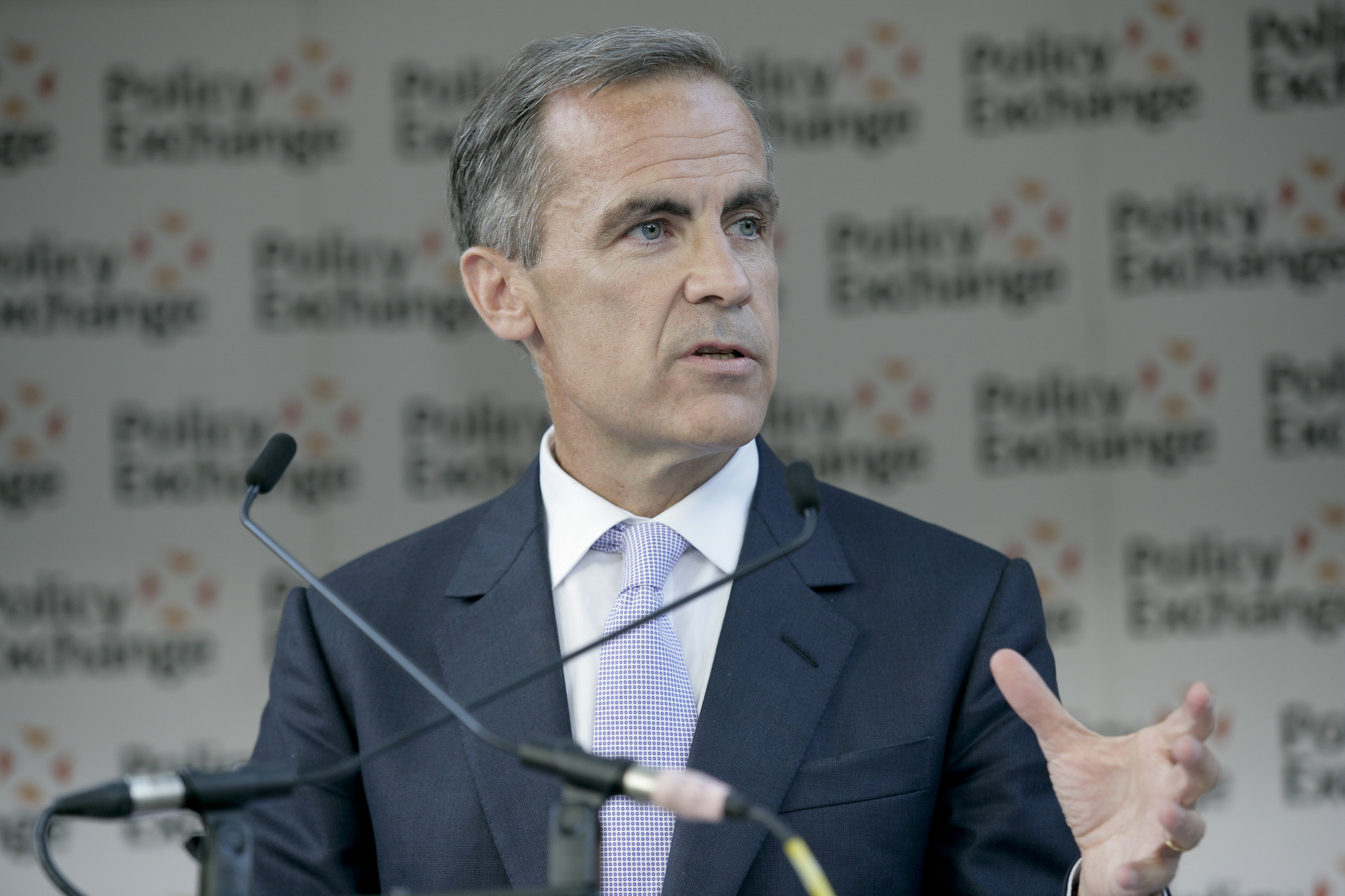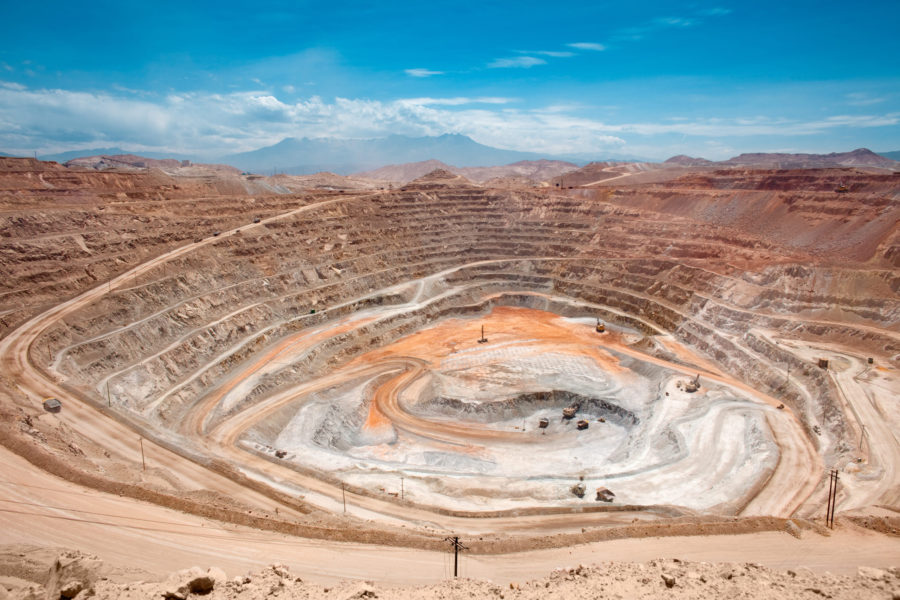A historic window of opportunity in Mongolia
 Investor fears about mining stocks are misplaced, says James Passin, a hedge fund manager with New York-based Firebird Management, especially if those companies are mining in Mongolia. Firebird manages a portfolio of private equity funds that invest in Mongolia, one of the fastest growing economies with some of the most extensive, untapped resources in the world. The country is already home to the largest copper deposit and in this exclusive Gold Report interview, Passin explains why there is potential for dozens more similar finds.
Investor fears about mining stocks are misplaced, says James Passin, a hedge fund manager with New York-based Firebird Management, especially if those companies are mining in Mongolia. Firebird manages a portfolio of private equity funds that invest in Mongolia, one of the fastest growing economies with some of the most extensive, untapped resources in the world. The country is already home to the largest copper deposit and in this exclusive Gold Report interview, Passin explains why there is potential for dozens more similar finds.
The Gold Report: James, the Bank of England (BOE), the European Central Bank (ECB) and the People’s Bank of China have made moves to boost flagging economies. The BOE added £50 million to its quantitative easing program. The ECB reduced its key lending rate to a record low of 0.75%. China cut its key lending rate for the second time in a month to prevent a further slump in manufacturing and a fall in property values. What effect will these moves have on the gold price through year-end?
James Passin: It’s clear that loosening monetary conditions will stimulate commodity prices generally and will eventually support the beginning of a great inflationary wave. In the short term, it’s impossible to call, as strong deflationary pressures are emanating out of weak economic conditions and deleveraging. Gold, while far less popular than in recent years, is still a widely held asset of hedge funds. The consequence is that it’s harder for gold to have any kind of sustainable short-term reaction to changes in monetary conditions.
TGR: Gold is trading around $1,600/ounce (oz) right now. Will it hold?
JP: It could potentially test the lower ranges, but it feels as if it’s building a strong base and could start to move higher toward the end of the year.
TGR: Will China’s lending rate cut affect the pricing of base metals and other bulk commodities, like copper and iron ore?
JP: China is facing significant domestic economic headwinds. I’m skeptical that the recent move in itself is going to be enough to have any kind of significant sustainable increase in base metal prices. Longer term, I’m optimistic about China’s ability to engineer an economic recovery.
At the same time, my view is that interest rates will remain negative in real terms and will generally be stimulative and supportive to commodity prices, including base metal prices.
TGR: Will China’s rate cut have an impact on the Mongolian economy?
JP: It’s hard to say. The more important question is: To what extent will China’s monetary and credit policy offset the weakening trends in the Chinese economy? The Mongolian economy will be dramatically impacted by Chinese economic conditions.
TGR: What’s happening in Mongolia in terms of growth and opportunities?
JP: Mongolia is the fastest growing economy in the world. The economy has been compounding at almost 20% in real terms. There’s a lot of evidence that the real gross domestic product (GDP) is a lot higher, due to unreported economic activity. The trends underpinning this growth are still intact and the economy is growing from a very low base. It’s likely, if not inevitable, that Mongolia’s economy will continue to compound at an extraordinarily high real rate of return for the next several decades.
TGR: What other countries would you compare Mongolia’s growth trajectory to?
JP: Looking back to the beginning of the great oil boom in the Gulf countries, such as Kuwait, there is similar economic potential and a similar population base, too. Those economies grew from very small bases to become substantial and important from a global perspective. This was driven by the export of oil, but also from sustainable policies of building up sovereign wealth funds and maintaining strong sovereign balance sheets.
“Mongolia is the fastest growing economy in the world.”
Mongolia has other attributes that might even lead to more rapid and sustainable growth, which includes its very strong democratic political system, the breadth of literacy, its natural entrepreneurism and its proximity to some of the most dynamic economies in the world, such as China.
Present day, it’s very hard to find other countries that have similar potential. The countries that look interesting today—Myanmar, North Korea—have various issues and problems, but also very exciting attributes.
Mongolia is an early-stage frontier market with many of the problems typically associated with developing countries. But, it also has a fairly advanced civil and political infrastructure. Its unique setting will enable Mongolia to continue to compound at extraordinarily high rates of growth—rates of growth that are going to continue to attract both strategic and portfolio investors.
TGR: But if China sneezes, Mongolia gets a cold. If China’s growth drops to 7% this year instead of its projected 8%, how much is that felt in Mongolia?
JP: There is a very high correlation between Mongolian exports and Chinese demand. There is a very quick pass-through mechanism from China to Mongolia. Even a moderate slowdown in Chinese growth could have a disproportionate effect on Mongolia.
However, the Mongolian banking system is much stronger than it was during the global financial crisis. The sovereign balance sheet is strong relative to the size of the economy. The likelihood of Mongolia having any kind of severe crisis or systemic existential problems is quite low—even if there is a more dramatic deceleration in the Chinese economy.
TGR: Is China one of the bigger contributors of foreign direct investment (FDI) in Mongolia?
JP: Absolutely, China is a significant contributor of FDI in Mongolia. From 1990 to 2010, China was responsible for about 50% of its FDI.
FDI from China is quite controversial. In fact, a law was recently approved by parliament that is directed at regulating FDI primarily from China. These days, a lot of the FDI is flowing from Canada, Australia, Japan, South Korea, Europe and the U.S. China is a large contributor to FDI, but it’s not the dominant contributor. However, FDI is primarily facilitating the construction infrastructure needed to deliver raw materials to China. So, ultimately, the FDI story is still very much China-driven.
TGR: How would you compare the investment risks in Mongolia with the investment risk in countries like Kazakhstan, Uzbekistan and Turkmenistan?
JP: I know Central Asia quite well, having traveled extensively throughout the region over the last 15 years and having deployed capital in various equity plays in Kazakhstan. While we historically generated significant net returns investing in Canadian-listed companies that were de facto vehicles for the Kazakh elite, we do think that Mongolia alone of all Central Asian countries has the potential to develop a deep and globally significant domestic capital market. One of the key facts to remember is that Mongolia is a democracy. A democracy is arguably inherently more stable than a dictatorship or a de facto kingdom—at least to the extent that greater transparency builds confidence in financial markets and policies enable broader participation in domestic wealth creation.
TGR: One interesting case study on risk in those types of places versus Mongolia is Centerra Gold Inc. (CG:TSX; CAGDF:OTCPK). Centerra has had all sorts of problems with the government in the Kyrgyz Republic, including getting permits for its Kumtor gold mine. Centerra also has two gold operations in Mongolia. It’s diversifying the risk of Kyrgyz by operating in a more favorable jurisdiction.
JP: The political landscape in the Kyrgyz Republic is very difficult to navigate.
Mongolia is the 18th largest country in the world by size. It’s sitting on the continental subduction zone between the Asian and Indian subcontinents. It hosts some of the world’s most prolific mineral belts with some of the world’s largest known undeveloped mineral deposits, some of which are just beginning to get into early phases of production. The exploration is just scratching the surface.
“Mongolia hosts some of the world’s most prolific mineral belts with some of the world’s largest known undeveloped mineral deposits.”
Some geologists talk about the possible existence of 20 or 30 Oyu Tolgoi-type deposits in Mongolia—not to mention the other minerals from iron to uranium to silver to molybdenum. There are also remnants of a sea, the origin of coal-bearing sedimentary basins, with projected 100 billion tons (Bt) thermal coal and 30 Bt coking coal, as well as hydrocarbon potential.
The mineral potential is already in the trillions of dollars and the true value is probably in the tens or even hundreds of trillions of dollars. It really is an incomparable destination for strategic investors.
TGR: Another major factor is that very little of the country has been exposed to advanced exploration techniques.
JP: Many of the existing surveys were conducted by the Soviet Union 50 years ago, when surveying exploration technology was quite primitive. Some of the new tools are very powerful, leading to the ability to make new discoveries and to drill to deeper targets at lower costs. New satellite tools can even conduct imagery from space.
Our private equity business has control of certain mineral exploration licenses and has conducted a number of exploration programs. My personal experience is that the application of modern exploration technology and practices to exploration programs in Mongolia has led to very significant discoveries. The size of Mongolia is so vast that the new generation of exploration is just starting.
TGR: Has the development of Oyu Tolgoi (which translates to “turquoise hill”), by Rio Tinto Plc (RIO:NYSE; RIO:ASX) and Ivanhoe Mines Ltd. (IVN:TSX; IVN:NYSE), put Mongolia on the radar screens of investors?
JP: Absolutely. By following Ivanhoe back in 2004, it led me to look at Mongolia’s long-term potential. Robert Friedland’s success in negotiating a strategic investment agreement with the Mongolian government enabled the financing and development of the project, which is almost close to beginning pilot production.
The long-term increase and capture of new employment and the feedback effects of all the economic activity will have an unpredictable impact on the Mongolian economy. It will cause interest rates to trend down and make funding costs cheaper, which will lower hurdles for businesses and enable them to fund more marginal projects and business opportunities in all sectors. That will result in more tax revenue for the government to build infrastructure, including rail, road and power transmission and distribution, that will help to lower the cost of manufacturing and transportation costs, which will help to boost productivity.
There will be more and more world-class mineral deposits defined, discovered, developed and brought into production. That will trigger the development of all kinds of related businesses that will benefit from the higher level of economic activity. This feedback effect is going to drive the exponential real compounding growth in Mongolia’s GDP. It will also lead to one of the greatest increases in GDP per capita in world history over a relatively short period.
TGR: Oyu Tolgoi is the biggest copper deposit in the world, but it also contains 21 million ounces of gold. Have there been any other significant discoveries besides Oyu Tolgoi that you could tell us about?
JP: A lot of projects that we’re monitoring look quite exciting, for example, Sharyn Gol JSC (SHG:MSE), a Mongolian Stock Exchange-listed company that Firebird took control of in 2010. It was nearly insolvent and had a market cap of $8 million when we took control of the company. We provided a line of credit that enabled the company to drill its license area, resulting in a 12x increase in known resources and the receipt of a Joint Ore Reserves Committee compliant resource of 374 million tons, 80% of which is open pittable.
It’s just one example of modern exploration technology used at a legacy deposit. We’ve had additional success investing in the rehabilitation of legacy brownfield mines. We also have a number of greenfield exploration programs.
Considering the prospectivity of Mongolia and the infrastructure that is starting to be built, it may be worthwhile for professional investors to consider chasing some of these exploration projects.
TGR: You’re chairman of Undur Tolgoi Minerals Inc. (UTM:CNSX), in which your firm has a significant position. Can you update us on its early exploration?
JP: Undur Tolgoi was founded by Firebird. We took the company public through a reverse takeover. The company controls a mineral exploration license of over 9,620 hectors in Mongolia’s Gobi Desert. It’s on the edge of the Devonian arc, which is the right address for potential copper-gold porphyry systems.
It’s an early-stage exploration program. The company has conducted ground samples and gravity and magnetic surveys and is about to launch an induced polarization survey. There’s potential for some high-grade epithermal veins that could be very interesting near surface. However, we are primarily looking for deeper, larger disseminated mineralization systems.
TGR: Are there any other significant companies that are developing gold projects in Mongolia?
JP: There are some interesting gold projects and properties that are privately controlled by Mongolian groups or in partnerships with foreign groups. I can’t point to a particular listed company offshore that has a world-class gold property, but there are some very interesting gold properties in Mongolia.
TGR: What about other metals?
JP: Some well-known properties that look pretty interesting are in various stages of development—some large iron ore deposits and molybdenum.
TGR: The market is of a risk-off sentiment right now. Many investors have taken a defensive strategy in their investment portfolios. Why should they abandon at least a portion of that tact to invest in what’s perceived to be very risky commodity play?
JP: In an environment where people are willing to loan trillions of dollars to governments with returns approaching zero and effectively negative interest rates in real terms, who am I to argue about risk versus return? In an environment where every central bank is in a race to zero interest rates and the solution to fiscal imbalances is to monetize that through printing money, it seems to me that the great risk is hyperinflation. In highly inflationary environments, it’s better to be in equity. And it’s even better to be in mining-related equities. There’s a risk to not being invested in mining companies.
“This might prove to be the historic moment to deploy capital in a country like Mongolia.”
In early-stage frontier markets, like Mongolia or Africa, the risk is to get in too late. Getting in too early, even with small amounts of capital, enables investors to enjoy the initial appreciation before the investment story becomes clear.
During environments of fear, uncertainty and risk aversion, that’s when there are great bargains for those willing to provide capital and to finance deals and transactions. This might prove to be the historic moment to deploy capital in a country like Mongolia.
TGR: Thanks for sharing your insights with us.
James Passin joined Firebird in 1999. He co-founded and manages Firebird Global Fund, Firebird Global Fund II, Firebird Mongolia Fund and Firebird New Mongolia Fund. Passin is a graduate of St. John’s College, where he majored in philosophy and classical literature. He serves on the board of directors of several Mongolian and Canadian companies, including Sharyn Gol JSC, Baganuur JSC, BDSec JSC, National Investment Bank of Mongolia and Undur Tolgoi Minerals Inc. Passin is also the chairman and CEO of Vanoil Energy Ltd., a Canadian oil exploration company focused on Kenya and Rwanda, and the non-executive chairman of Fluormin Plc, a UK company listed on the London Stock Exchange’s Alternative Investment Market. Passin was named “Fund Manager of the Year” at the 2012 Mines and Money Conference in Hong Kong.
Want to read more exclusive Gold Report interviews like this? Sign up for our free e-newsletter, and you’ll learn when new articles have been published. To see a list of recent interviews with industry analysts and commentators, visit our Exclusive Interviews page.
DISCLOSURE:
1) Brian Sylvester of The Gold Report conducted this interview. He personally and/or his family own shares of the following companies mentioned in this interview: None.
2) The following companies mentioned in the interview are sponsors of The Gold Report: Undur Tolgoi Minerals Inc. Streetwise Reports does not accept stock in exchange for services. Interviews are edited for clarity.
3) James Passin: I personally and/or my family and/or funds that I manage and in which I have a beneficial interest own shares of the following companies mentioned in this interview: Sharyn Gol JSC, Undur Tolgoi Minerals Inc. and Ivanhoe Mines Ltd. I personally and/or my family was not paid by any company mentioned in this interview. I was not paid by Streetwise Reports for participating in this interview.
More News
Resouro boosts titanium resource by 37% at Tiros project in Brazil
Total resources are now 1,400 Mt1 at 12% TiO₂ and 4,000 ppm TREO, the company said.
April 09, 2025 | 04:37 pm
Prime Minister Mark Carney vows to speed permits, make Canada energy superpower
The Liberal Party leader said at a campaign stop in Calgary that his government would create a Major Federal Project Office with a “one project, one review” mandate.
April 09, 2025 | 03:34 pm
Peru mining chamber sees copper output up 2-4% this year
That would put Peru's copper production between 2.79 million and 2.85 million metric tons.
April 09, 2025 | 02:53 pm
{{ commodity.name }}
{{ post.title }}
{{ post.excerpt }}
{{ post.date }}




Comments